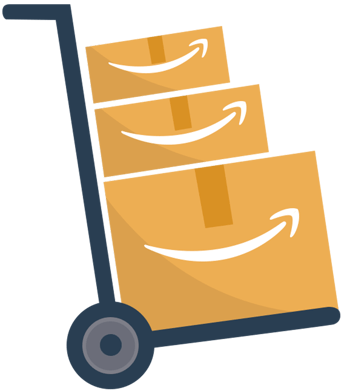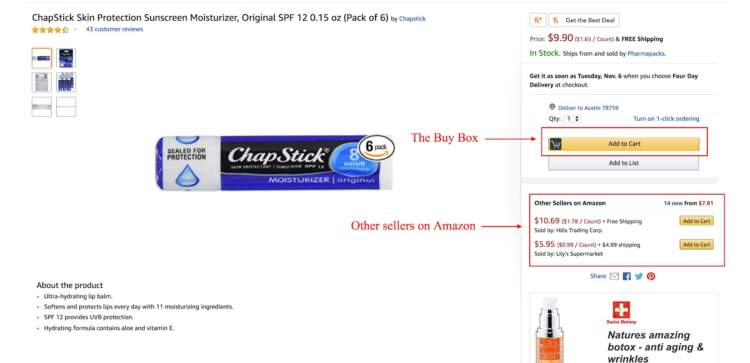Originally published on October 4, 2023, updated March 19, 2025
Menu
Join Our Email List
- Receive our monthly newsletter.
- Stay up to date on Amazon policies.
- Get tips to grow your business.
On Amazon, every sale is a win in a fierce marketplace. Products ready to ship immediately have the upper hand. But backorders? They can make you miss out on sales, both now and in the future.
How can sellers on Amazon tackle the hurdles backorders bring? This piece sheds some light and offers hands-on tactics for Amazon sellers to conquer the complexities of backorders.
On Amazon, customers expect fast deliveries, especially with Amazon Prime's speedy promises. But when you face backorders, this promise can falter and lead to unhappy customers.
Customers used to Prime's timely deliveries feel disappointed with delays. This disappointment can turn into negative feedback, visible to everyone on Amazon. Such feedback not only pushes away potential buyers but can also hurt your overall rating. A lower rating affects your product's visibility, search rankings, and ultimately, sales.
Amazon's A-to-Z Guarantee adds another layer of complexity — it ensures customers get their orders on time. If they don't, due to backorders or other reasons, they can get a refund. This means a direct financial hit for you and further negative sentiment towards your brand.
Here’s how you can tackle this issue:
Challenges like backorders test businesses' adaptability. But with clear communication, proactive steps, and a focus on customer satisfaction, you can overcome this challenge.
Amazon is a beacon of efficiency, but backorders can disrupt this, escalating your operational costs. These aren't just about potential lost sales; they ripple through your entire operation.
 Using Amazon FBA? Backorders can mean steeper storage fees, especially during peak times like Black Friday. Amazon's pricing encourages swift inventory turnover. Backordered items, taking up space, can lead to heftier fees if they linger unsold.
Using Amazon FBA? Backorders can mean steeper storage fees, especially during peak times like Black Friday. Amazon's pricing encourages swift inventory turnover. Backordered items, taking up space, can lead to heftier fees if they linger unsold.
Shipping costs can also spiral. To appease customers, you might send available items first and backordered ones later. While this boosts customer satisfaction, multiple shipments invariably cost more than a single consolidated one. Plus, the urgency to replenish backordered stock can tempt you into pricier shipping options or even higher supplier costs, denting your profits.
Here are four practical approaches to handle this issue:
While backorders present operational and financial challenges, a well-thought-out strategy centered on customer communication, supplier collaboration, and efficient inventory management can help you ensure profitability and customer satisfaction.

Source: BigCommerce
The prized Buy Box on Amazon, which boosts sales, considers stock availability. If you're often hit with backorders, you might lose this advantage to rivals who keep their shelves full. This loss isn't just about immediate sales; it can dim your product's visibility and ranking over time.
Related reading: Get More Amazon Sales with a Buy Box Tracker
Amazon's IPI (Inventory Performance Index) measures your inventory's health. Too many backorders? Your IPI score might drop, limiting your storage space during busy times. This can push you into hard choices about what to stock and how much.
Predicting demand gets tricky too. Backorders can distort sales data, making it hard for you to foresee future demand. This confusion can trap you in a cycle of overstocking (and paying more storage fees) or understocking (and facing more backorders).
You can avoid this by:
RestockPro by eComEngine can help you manage your FBA inventory more effectively.
In Amazon's ever-shifting landscape, stay nimble, use data to guide you, and build trusty supplier relationships to keep your inventory game strong and in sync with market trends.
If your product is on backorder, customers might not stick around. With so many options on Amazon, they can easily jump to a similar product that's in stock. This not only means you lose a sale, but your competitors get a boost, potentially climbing higher in rankings.
Plus, a track record of backorders can drag down your Amazon rating. Drop too low, and you'll slide down in search results, making it harder for customers to find you. And watch out: competitors might run ads against your out-of-stock product, snatching away potential sales.
When backorders happen, have a plan to keep your customers close:
With a can-do attitude and a focus on keeping your customers happy, you can turn hurdles like backorders into chances for better customer relationships and loyalty.
Backorders, though a usual hiccup in eCommerce, can hit especially hard on a competitive stage like Amazon. Handling backorders isn't just about salvaging sales; it's about safeguarding a brand's long-term standing and trust in a constantly shifting market.
However, armed with the right approaches and tools, you can flip these obstacles into chances for growth, ensuring steady customer contentment and earnings.
How can you remain a step ahead and deliver flawless customer journeys, even when supply chains hit a snag? The answer is key to ensuring customer loyalty.
Originally published on October 4, 2023, updated March 19, 2025
This post is accurate as of the date of publication. Some features and information may have changed due to product updates or Amazon policy changes.
These Stories on Inventory
14321 Winter Breeze Drive
Suite 121 Midlothian, VA 23113
Call us: 800-757-6840





Copyright© 2007-2025 eComEngine, LLC. All Rights Reserved. eComEngine®, FeedbackFive®, RestockPro®, and SellerPulse® are trademarks or registered trademarks of eComEngine, LLC. Amazon's trademark is used under license from Amazon.com, Inc. or its affiliates.
No Comments Yet
Let us know what you think